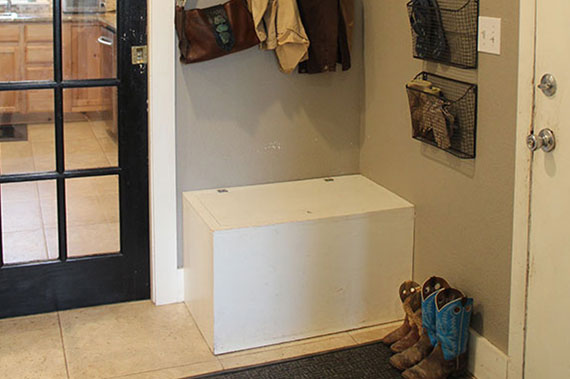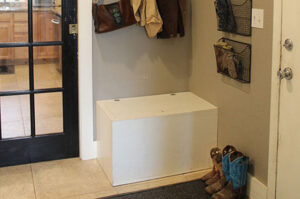


Decorating ABCs
Analyze, bequeath and consolidate your way to a harmonious home.
Article and photos by Johi Kokjohn-Wagner
Our modern-day lives are often hectic and full, which makes it difficult to find the time and space where we can simply ”be.” Our homes should be our havens; a place for our minds and bodies to rest at the end of the day, yet so many of us have inadvertently created a chaotic interior—one in which we feel the need to escape from in order to obtain that elusive peace. Clutter clogs the mind, which is why editing might be the most crucial element of the design process. These straightforward steps will help you rein in your belongings and create a harmonious home.
Simple Storage Solutions
“A place for everything, and everything in its place.”
To find a proper and useful place for everything takes planning, intuition and execution.
First, decipher your storage needs for daily items including mail, important papers, library books, office supplies and kitchen storage items.
Second, think about each of these items and the location that best them. Typically, our first instinct is where you will most likely go to look for a lost item.
Third, map your storage items by room, keeping like items together and heavily used items easily accessible.
Fourth, if you find yourself lacking the right storage space, invest in custom built-ins or store bought accessories—hooks, baskets or boxes—to help with your specific needs.
 Cut out the Clutter
Cut out the Clutter
Once you have established the proper spot to stow and access your important items, it is critical to reevaluate what you deem important.
People create emotional attachments to inanimate objects, a practice which can quickly lead to an abundance of stuff. Homes are a place for people and the items they love, not stacks of things. To help eliminate the excess in your home, first consider the people dwelling within. Make sure every living thing has a space to inhabit, including your guests and pets. After you have prioritized making your home a space for living, prioritize your belongings. One way to achieve this is to simply think of your possessions in three ways: need items, love items and obligation items.
Obligation items are typically someone else’s love items that have been bestowed upon you, hence overwhelming your home. If this person has passed, honor can be paid through a memory box: an artistic display of select items that represent that person. If this person is still present, you might need to rent a storage unit.
Treat obligation items with a firm hand. Be realistic about their usefulness, but also keep in mind that your home is ultimately for you and your life, not someone else’s. Keep things that will retain or gain value for future generations, and donate the rest.
Baby Steps
 To beat the clutter on a daily level, clear the counters and tabletops nightly, throw away junk mail immediately, wipe down flat surfaces and clean the kitchen sink—yes, that requires you to wash the dishes. Wash, dry, fold and put away laundry. If something new comes into your home, get rid of something old.
To beat the clutter on a daily level, clear the counters and tabletops nightly, throw away junk mail immediately, wipe down flat surfaces and clean the kitchen sink—yes, that requires you to wash the dishes. Wash, dry, fold and put away laundry. If something new comes into your home, get rid of something old.
To help reduce excess on a weekly basis, go through your papers and eliminate unimportant documents. File your bills. Clean the refrigerator. Sweep, vacuum and mop the floors. Lightly dust your home, and clean the bathrooms. Change the sheets on all the beds.
Once a month, take a few hours to sort through the junk drawer and discard expired coupons and unwanted items. Sort and donate or discard outdated magazines. Clean the ceiling fans and baseboards, and remove the cobwebs.
Twice a year, clean out closets and donate unwanted or unused items. Deep clean textiles, and wash the windows.
On a design level, freshen your room with cut flowers and toss ratty throw pillows. Change out your wall art for the season. A no-fail design aesthetic is to repeat elements, so something as simple as painting your picture frames the same hue can create a more cohesive, less visually hectic effect.
Sorting through your home’s items and keeping only what you need and love is good start to any design editing process. Making sure you have adequate and accessible storage will help keep your home functioning well on a day-to-day level. Clearing your home of unnecessary clutter and excess “stuff” will not only create a sense of calm within your walls, it will also help instill a sense of peace within your soul.
SHARE THIS